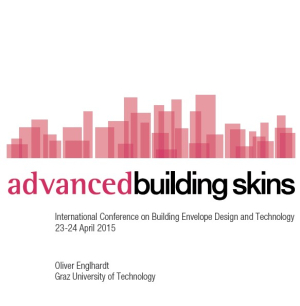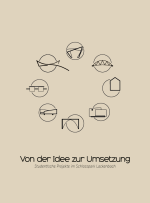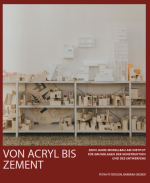Editorial
In every architectural period the facade was most important for the expression and appearance of a building.
Facades characterize the different architectural periods – they characterize our cities.
But
we are under the impression, we perceive, that cities – the buildings
we live in and we live with – are becoming almost identical.
Are we
moving towards global uniformity? If we reflect on our fundamental
expectations and demands on our built environment I am not necessarily
convinced that this is the case. There are different needs almost
everywhere. It’s not only about the appearance, the esthetics. If we
have a more detailed look, it’s much more about the functional equipment
and this causes the complexity of building enclosures. There is, in
fact, a strong diversity.
Nowadays half of the 7 billion and in
the nearby future 75 percent of the worlds population of then about 9
billion is expected to be concentrated in cities. The city will be the
principal habitat of mankind. Cities are characterized by variability.
Outside and inside a building, everything is non-steady, everything is
changing continually. Buildings will be confronted with diverse external
influences, with impacts, boundary conditions and their temporal
changes, – with alterations of different kinds. In addition, we will be
challenged to use buildings – and that means the building enclosure – as
power plants, as energy converters. Active and adaptive,
changeable
constructions are the next big step in the conception of buildings –
and even more in the conception and design of building enclosures. The
facade will have a profound impact on the ecological balance of our
habitat, the human condition and the quality of our life. And they will
make up a substantial proportion in the building construction and
operating costs. That is why facades – and their design – matter!
After
our conference in 2012 it is now the second time I am organizing this
international platform at the Graz University of Technology. This
Conference again focuses on the enormous diversity of façade
architecture, on new production processes and on the vast amount of new
materials broadening the design base for extraordinary building
envelopes.
With this international conference we will bring them
together: creative and innovative professionals and researchers at the
forefront of skin design to discuss tasks and issues in research, design
and manufacturing of high-performance façades and building envelopes.
The
articles assembled in this publication are showing new perspectives on,
and an enhanced insight into, developments and research in design and
engineering for tomorrow’s advanced building skins. Al papers are peer
reviewed doubly before publication by the international scientific
committee. I would like to thank the members of the scientific committee
and I would in particular like to thank all the authors who have
enriched this publication with their revealing and extraordinary
contributions!
Best regards,
Oliver Englhardt








